Northumberland weekend
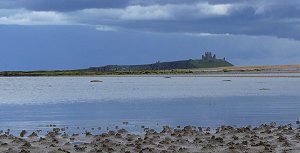 A group of members enjoyed a memorable weekend on the Northumberland coast, with many notable sightings. A selection of photographs is presented below.
A group of members enjoyed a memorable weekend on the Northumberland coast, with many notable sightings. A selection of photographs is presented below.


News > 2015
News 2015
 A group of members enjoyed a memorable weekend on the Northumberland coast, with many notable sightings. A selection of photographs is presented below.
A group of members enjoyed a memorable weekend on the Northumberland coast, with many notable sightings. A selection of photographs is presented below.
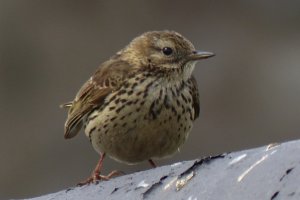
Meadow Pipit (IAA)
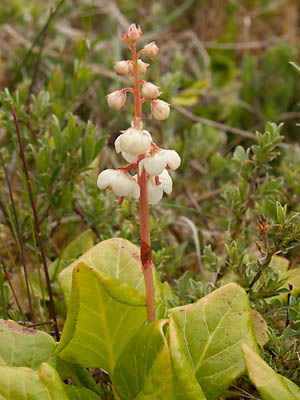
Round-leaved Wintergreen (AJC)
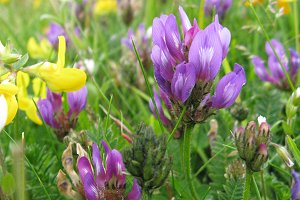
Purple Milk-vetch (RM)
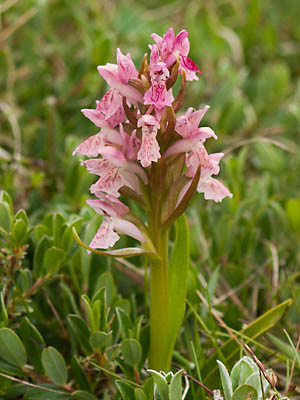
Early Marsh-orchid (AJC)
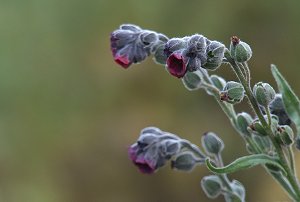
Hound's-tongue (IAA)
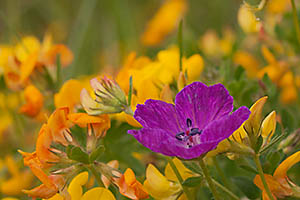
Bloody Crane's-bill (AJC)
 I noticed an extensive patch of Winter Heliotrope, Petasites fragrans, in flower on the railway embankment just by the side of the bridge on Newland Avenue (TA 082 306). Introduced as a garden plant in 1806 from Mediterranean North Africa it was in already in the wild by 1835. It is dioecious, but only the male plant occurs in Britain. It can be invasive forming dense cover that can exclude other species. However on the plus side it's nice to see something flowering this time of year! It would be interesting to see whether it occurs at other places along the railway but that's not really possible without trespassing. The Millennium Atlas recorded it in two other kilometre squares in Hull.
I noticed an extensive patch of Winter Heliotrope, Petasites fragrans, in flower on the railway embankment just by the side of the bridge on Newland Avenue (TA 082 306). Introduced as a garden plant in 1806 from Mediterranean North Africa it was in already in the wild by 1835. It is dioecious, but only the male plant occurs in Britain. It can be invasive forming dense cover that can exclude other species. However on the plus side it's nice to see something flowering this time of year! It would be interesting to see whether it occurs at other places along the railway but that's not really possible without trespassing. The Millennium Atlas recorded it in two other kilometre squares in Hull.
Andrew Chadwick, 14 January 2015
Andrew Ashworth, 24 January 2015
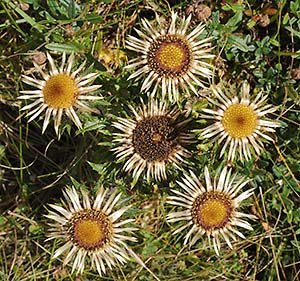 Eight members attended the meeting at Fordon chalk bank on Augsust 16th. It was a beautiful sunny day and there was a wide range of butterflies but none in great quantity. Highlights of the plants were Knotted Hedge-parsley Torilis nodosa, Field Woundwort Stachys arvensis and Henbit Dead-nettle Lamium ampexicaule all in arable fields at the top of the bank, a small patch of Dwarf Thistle Cirsium acaule on the main bank and Saw-wort Serratula tinctoria on a very nice road verge to the north-east of Fordon itself.
Eight members attended the meeting at Fordon chalk bank on Augsust 16th. It was a beautiful sunny day and there was a wide range of butterflies but none in great quantity. Highlights of the plants were Knotted Hedge-parsley Torilis nodosa, Field Woundwort Stachys arvensis and Henbit Dead-nettle Lamium ampexicaule all in arable fields at the top of the bank, a small patch of Dwarf Thistle Cirsium acaule on the main bank and Saw-wort Serratula tinctoria on a very nice road verge to the north-east of Fordon itself.
Andrew Chadwick, 17 August 2015
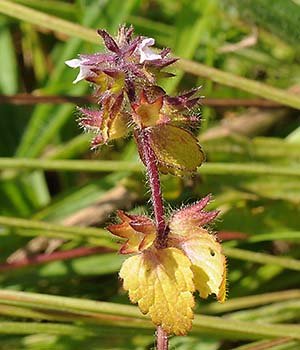
Field Woundwort, 16 August 2015 (AJC)
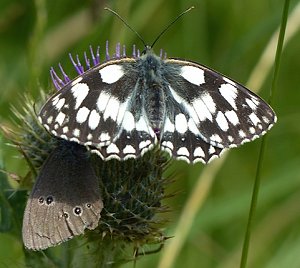
Marbled White and Ringlet on Spear Thistle (IAA)
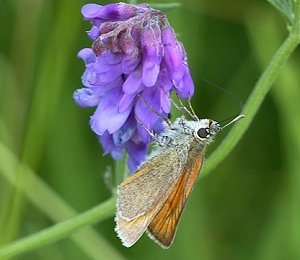
Small Skipper on Tufted Vetch (IAA)
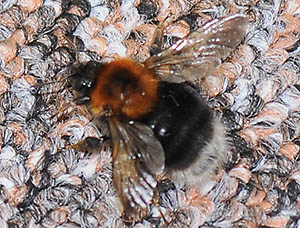
Whilst relaxing in the garden I noticed what looked like a few bees circling round an old overflow pipe that leads into the rear loft of our house. Closer observation through binoculars showed that they were indeed bees, and that there were others going in and out of the pipe into the loft. I suspected they were Tree Bumblebees Bombus hypnorum, and after a brave sortie into the loft to obtain a photo, I confirmed this. Tree bumblebees came from Europe to this country about 10 years ago and have spread rapidly northwards. Apparently the circling bees at the entrance are males waiting to mate with any newly emerging queens. Only a few days later I spotted what must be another nest in the eaves of a house opposite!
Andrew Chadwick, 30 June 2015
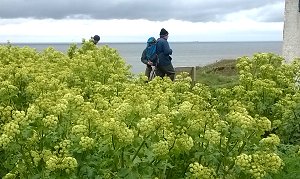
Despite the strong wind and unseasonably cool weather, a small band of members assembled for a bracing walk from North Sea Landing to the lighthouse. We were presented with magnificent views of the nesting sea birds and carpets of Primroses on the upper slopes of the cliffs. On returning, via Old Fall Plantation, we noted a fine show of naturalised Wallflowers on the south-facing cliffs. Picture - Alexanders Smyrnium olusatrum at the lighthouse.
Richard Middleton, 9 May 2015
Heartened by the sunshine, ten members braved the low temperature and brisk southerly wind for what has become the traditional first evening field meeting of the year. We were rewarded with our longest ever bird list - 47 in all if the two races of Pied Wagtail are differentiated!
Richard Middleton, 6 May 2015
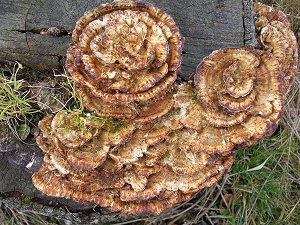
Our intention with this visit was to search for Adders, basking in the spring sunshine. Unfortunately, the day was mostly cloudy but with just enough sunshine to bring out a couple of Common Lizards. The only other herps. we encountered came in the form of frogspawn in a ditch.
Nearly forty bird species were seen. Highlights were a Woodcock and the calls of Green Woodpecker as well as the first Chiffchaff most of us had heard this year. Buzzard and Kestrel were also seen.
It was a bit early for plant ID but it is always good to practice ones basal rosette and dead seed head skills, not to mention twigs! Goat Willow was well in flower, but few other plants showed much sign of activity. Conifers were almost the only green things. All four species are introduced here, with only Scots Pine being native, though surprisingly, alien Lodgepole Pine is by far the most successful at regenerating.
Some members commentated on the deteriorating condition of the site overall. Despite efforts to restore tree planted areas, some of the rarer plant species like Bog Pimpernel had not been seen by anyone for several years.
John Killingbeck, 25 March 2015
Picture - fungi on a tree stump, Kath Middleton
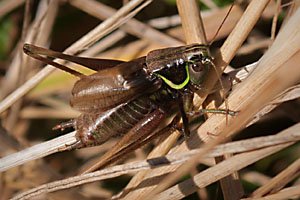
Roesel's Bush-cricket, 19 September 2015 (AJC)
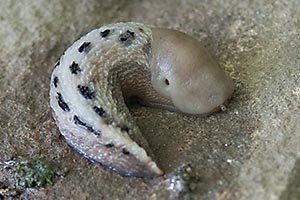 The recent trip to Biller Howdale put a few of us in position to stop off at Fylingthorpe to see the highly localised slug, Fylingthorpe Slug Limax dacampi. This large, distinctive species is a native to central Italy and was likely imported with the marble which decorates the boarding school. It doesn't seem to have expanded beyond the grounds of the school.
The recent trip to Biller Howdale put a few of us in position to stop off at Fylingthorpe to see the highly localised slug, Fylingthorpe Slug Limax dacampi. This large, distinctive species is a native to central Italy and was likely imported with the marble which decorates the boarding school. It doesn't seem to have expanded beyond the grounds of the school.
Rob Jaques, 26 June 2015
image Andrew Chadwick
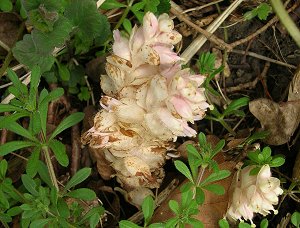
As we stepped out of the car, the people already there were watching Gyrfalcon. Someone then recalled the falconry centre at nearby Duncombe Park ...
We took a circular walk and personal highlights were the two Dippers on a gravel bar in the river, which stayed and performed for us for a while, Townhall Clock, an insignificant but delightful little plant which I always enjoy finding, and an abundance of Toothwort (above) growing on Hazel roots.
Some of us finished the day off with tea/coffee and cake in the Rievaulx visitor centre café. We arrived just as most of the cake had sold out so the choice wasn't great but it was good to sit outside and talk over our findings.
Kath Middleton, 19 April 2015
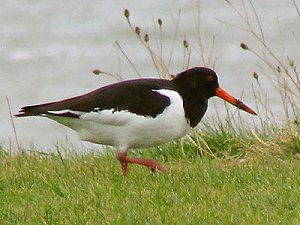 With a short window before the weather would close in, 12 members and friends braved a strong cold south-westerly wind to examine the area between the harbour and Sewerby steps. The harbour provided good views of tame Turnstones along with Redshank and a variety of gulls. Other highlights included Purple Sandpipers, clockwork Sanderlings, Oystercatchers with lone Knot and Barnacle Goose.
With a short window before the weather would close in, 12 members and friends braved a strong cold south-westerly wind to examine the area between the harbour and Sewerby steps. The harbour provided good views of tame Turnstones along with Redshank and a variety of gulls. Other highlights included Purple Sandpipers, clockwork Sanderlings, Oystercatchers with lone Knot and Barnacle Goose.Richard Middleton, 22 February 2015
Image by Africa Gómez
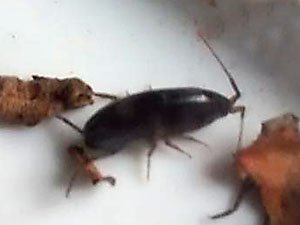
Whilst searching under rocks in a Park Avenue garden, an apparently thriving colony of landhoppers Arcitalitrus dorrieni was found under one particular large slab. These crustaceans are amphipods, along with the more familiar Gammarus pulex, but differs from most amphipods in being entirely adapted to land. These are a non-native species, introduced from eastern Australia but they seem to be having little impact on native species.
The record seems to be a first for the Hull area, and quite possibly for Yorkshire with most records centered around Cornwall and the west coast. It is likely that it is massively under-recorded although it is distinctive when found in the field as they erupt into life when disturbed and look remarkably like over-sized fleas.
Rob Jaques, 18 March 2015
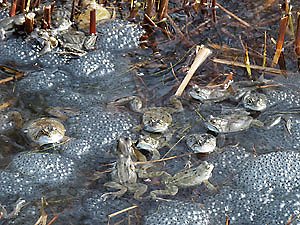
In the same garden as the landhoppers, a night time walk on the 8th of March around a large pond had 108 common frogs Rana temporaria in various stages of courtship. Also counted were 8 smooth newts Lissotriton vulgaris whose numbers will increase greatly as the weather improves.
Rob Jaques, 18 March 2015
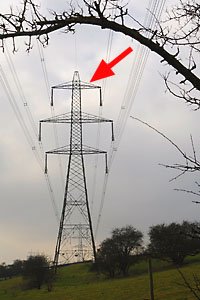 Setting off for a circular walk around Skidby, I could hear a mistle thrush singing in the distance. Mistle thrushes are early breeders and often seem to sing this time of year and then quieten down later in the season. Returning a few hours later and half-a-kilometre east, I could still hear it, sounding as though it was in roughly the same location. The usual place for a singing mistle thrush is the top of the tallest tree in the area This one had gone one better and had found a perch almost at the top of a pylon. No wonder the song was carrying so well!
Setting off for a circular walk around Skidby, I could hear a mistle thrush singing in the distance. Mistle thrushes are early breeders and often seem to sing this time of year and then quieten down later in the season. Returning a few hours later and half-a-kilometre east, I could still hear it, sounding as though it was in roughly the same location. The usual place for a singing mistle thrush is the top of the tallest tree in the area This one had gone one better and had found a perch almost at the top of a pylon. No wonder the song was carrying so well!
Andrew Chadwick, 15 February 2015